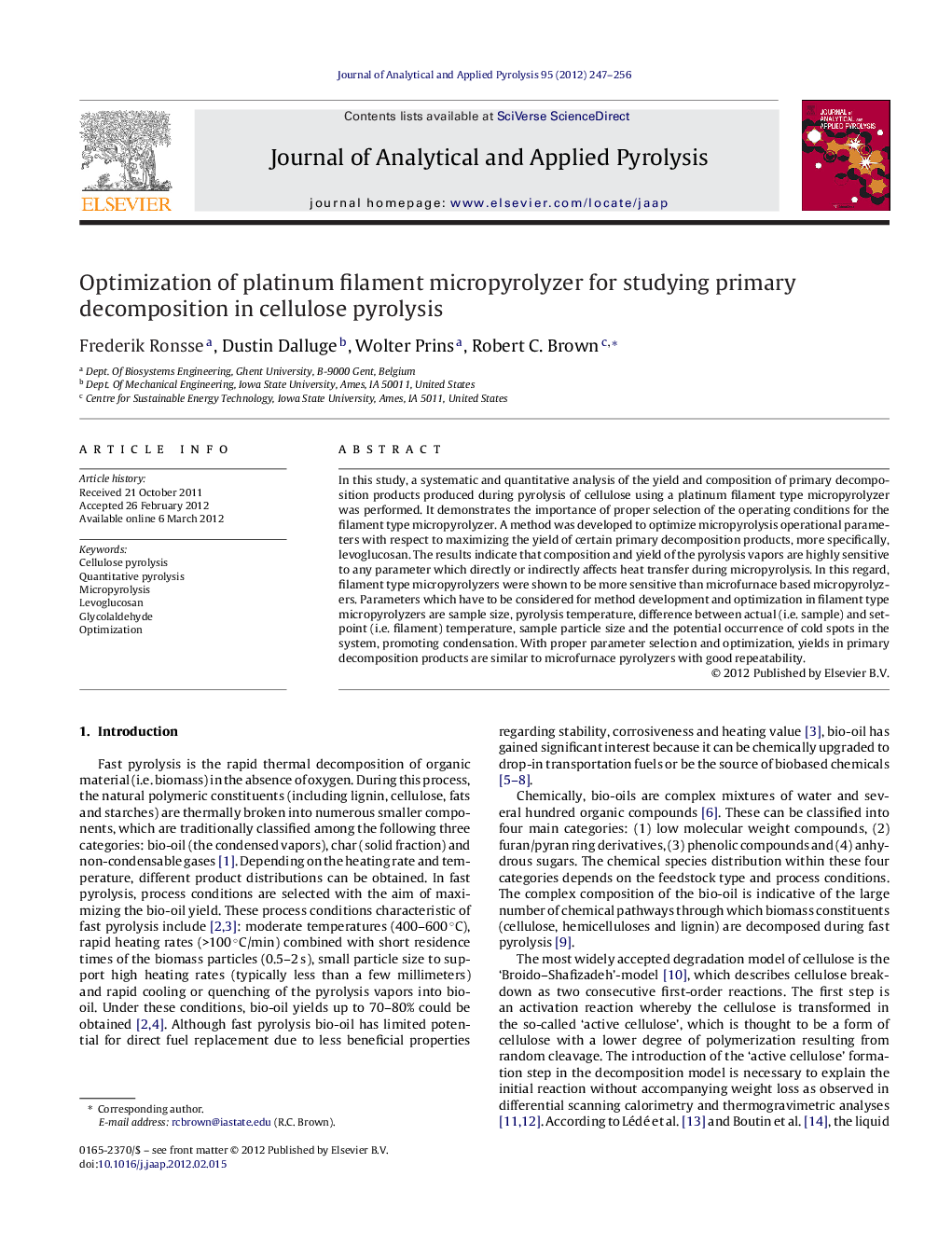| Article ID | Journal | Published Year | Pages | File Type |
|---|---|---|---|---|
| 1197408 | Journal of Analytical and Applied Pyrolysis | 2012 | 10 Pages |
In this study, a systematic and quantitative analysis of the yield and composition of primary decomposition products produced during pyrolysis of cellulose using a platinum filament type micropyrolyzer was performed. It demonstrates the importance of proper selection of the operating conditions for the filament type micropyrolyzer. A method was developed to optimize micropyrolysis operational parameters with respect to maximizing the yield of certain primary decomposition products, more specifically, levoglucosan. The results indicate that composition and yield of the pyrolysis vapors are highly sensitive to any parameter which directly or indirectly affects heat transfer during micropyrolysis. In this regard, filament type micropyrolyzers were shown to be more sensitive than microfurnace based micropyrolyzers. Parameters which have to be considered for method development and optimization in filament type micropyrolyzers are sample size, pyrolysis temperature, difference between actual (i.e. sample) and set-point (i.e. filament) temperature, sample particle size and the potential occurrence of cold spots in the system, promoting condensation. With proper parameter selection and optimization, yields in primary decomposition products are similar to microfurnace pyrolyzers with good repeatability.
► Quantitative analysis of decomposition products yield in cellulose micropyrolysis. ► Optimized method was developed for highest levoglucosan yield in Pt-filament micropyrolyzer. ► Yield results were compared between filament and microfurnace type pyrolyzers. ► Filament micropyrolyzers are highly sensitive to any parameter affecting heat transfer. ► With optimization, consistent levoglucosan yields of 36–45 wt% were reported.
